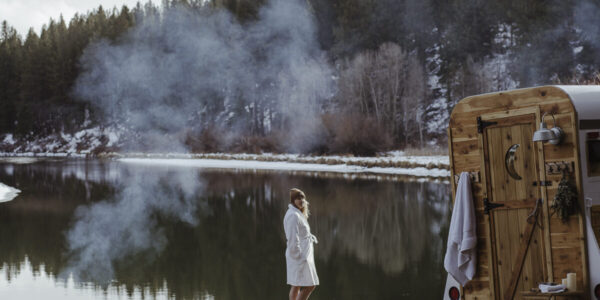
Don’t Let Your Veggies Hide in the Kitchen. Use Them to Decorate a Fall Harvest Table
Edible Gardens LA founder and master gardener Lauri Kranz shares her fall harvest, and some tips for putting the bounty on display.
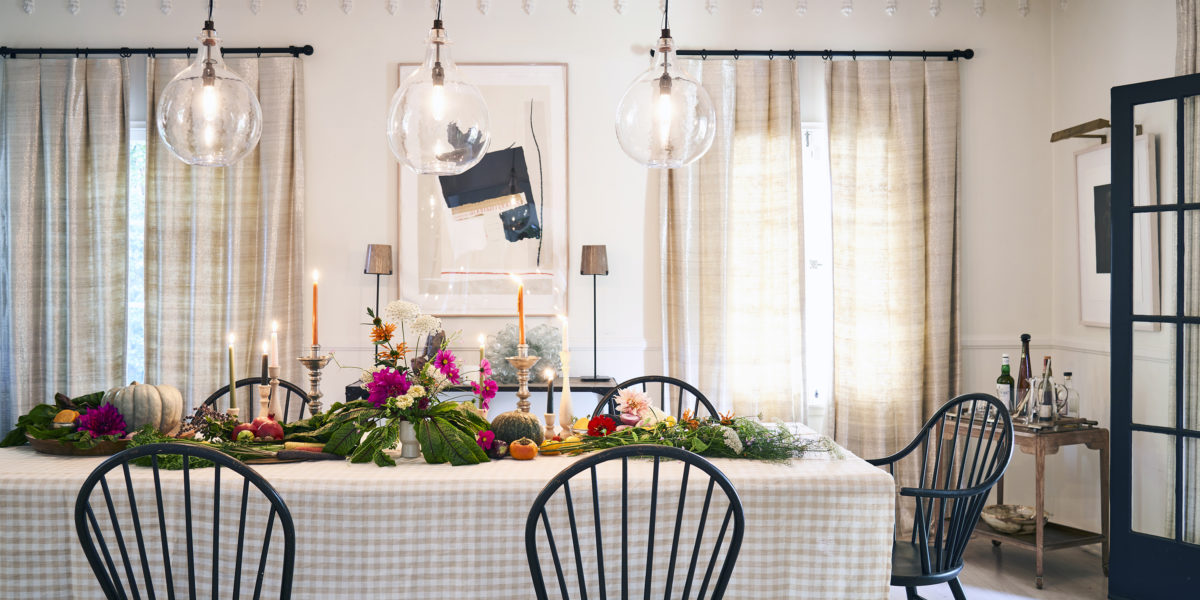
Thomas J. Story
If you think your vegetables are too pretty to hide in the produce drawer of your refrigerator, you are not alone. Autumn tablescapes have been heavy on tiny pumpkins, decorative squash, and dried, multi-colored heritage corn for as long as anyone can remember. And cornucopias, horn-shaped baskets filled with a fall harvest, have been a symbol of abundance since the second century C.E., when sculptors depicted Greek goddesses like Demeter and Persephone carrying a just-picked bounty of veggies, fruit, and flowers.
If a wicker basket filled with glossy eggplants and persimmons feels a little too much like an early ’80s throwback for your taste, you’re not alone in that thinking, either. There’s a modern way to display the gems you pick from your backyard garden, or your farmers market haul. It’s loose and painterly, using bowls and platters you may already have around the house, to arrange a mix of appealing shapes and colors. And if you use the vegetables you display on today’s table for tomorrow’s dinner, it’s a zero-waste arrangement.
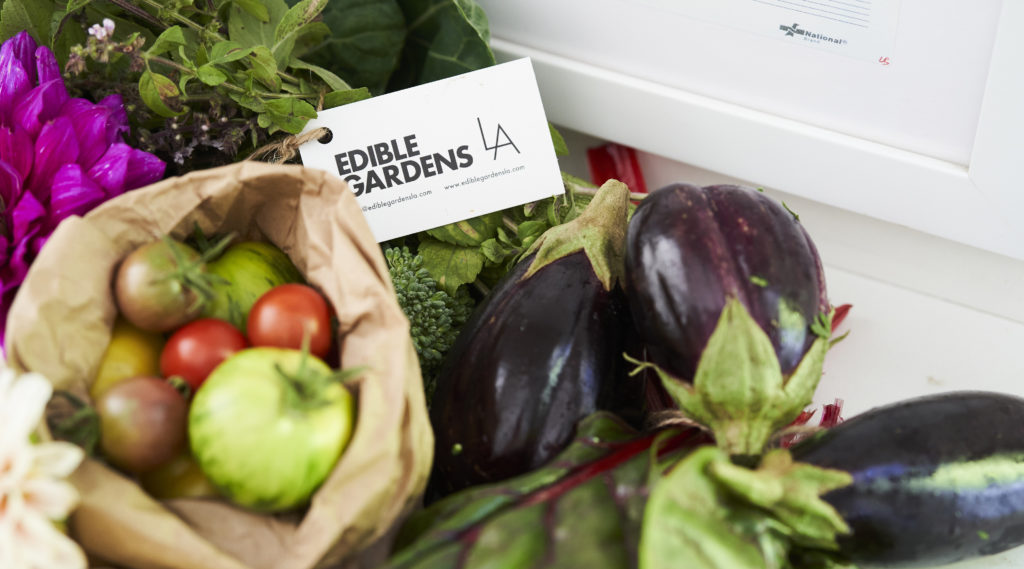
Thomas J. Story
Sunset enlisted the help of Lauri Kranz from Edible Gardens LA, and her friend and client, interior designer Molly Russell Ford, to help us come up with the ultimate fall harvest table.
Chances are, if you’ve ever spent time searching for gorgeous edible landscape ideas, you’ve stumbled onto Kranz’s work. For the past 11 years, she’s been building garden escapes for her lucky clients in and around Los Angeles. There’s a well-photographed garden pavilion that doubles as an outdoor dining room in the Hollywood Hills, some lush beds in a Beverly Hills front yard, and containers spilling over with greenery in yards all across the suburban sprawl that is LA. Many of those examples were featured in the book Kranz wrote with her husband, Dean Kuipers, A Garden Can Be Anywhere: Creating Bountiful and Beautiful Edible Gardens.
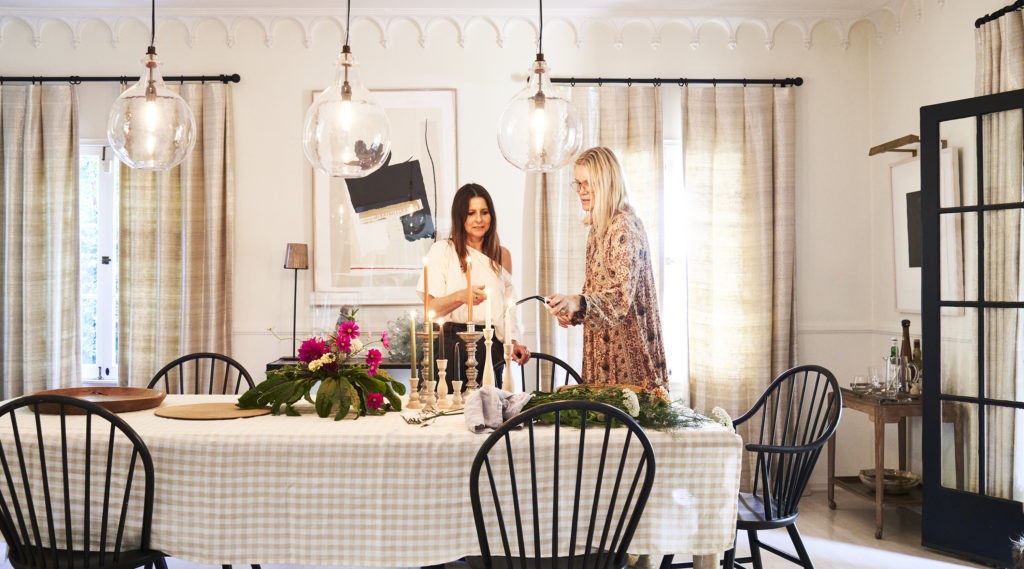
Thomas J. Story
What started as a side project, when she volunteered at her son’s school planting garden beds, has turned into a thriving business. In addition to planning, planting, and tending home gardens, Kranz has a small farm in the Glassell Park neighborhood of Los Angeles, where she grows vegetables and flowers that she delivers to local clients in her popular farm boxes. She also gathers produce from her favorite California growers, like the Tehachapi Heritage Grain Project and Weiser Family Farms (of the famous Weiser Farm potatoes). And the boxes are so full of color, texture, and beauty that they’re like a work of art.
“We started our farm deliveries at the beginning of the pandemic, in March 2020. My husband, Dean Kuipers, and I were worried about local farmers when we saw all of the restaurant closures,” she says. “These farmers taught me how to farm over the years and we saw a way we could support them.”
If you’re in the Los Angeles area, you can buy farm deliveries on their website. And Kranz just signed a lease for a small brick-and-mortar market in town. Stay tuned in to the Edible Gardens Instagram and website for details.
In the meantime, don’t hide those root vegetables and squash in your pantry. Put them on display on your fall table, and enjoy the literal fruits of your labor.
Five Tips For A Beautiful Fall Harvest Table
1. Rethink your greenery.
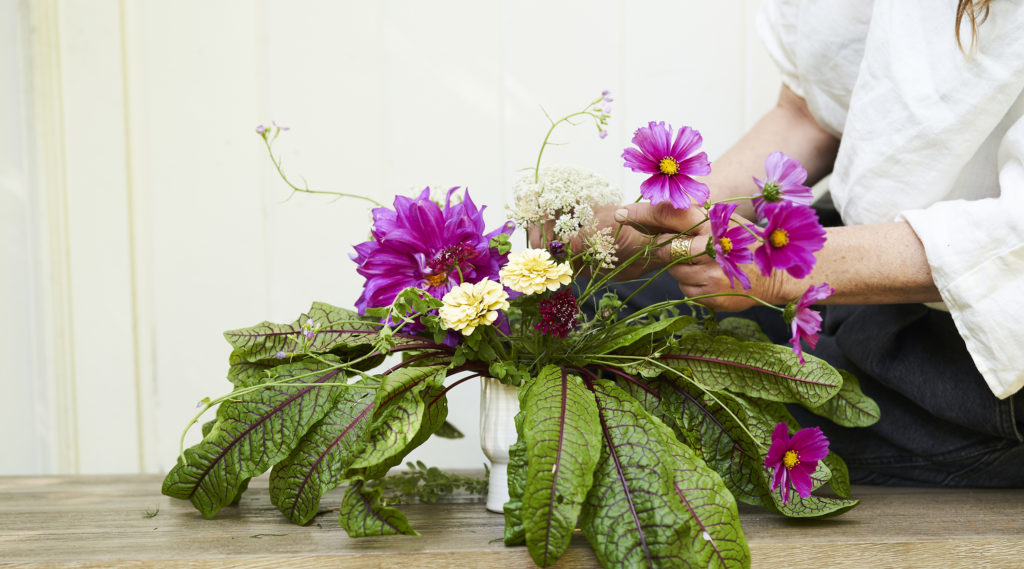
Thomas J. Story
Instead of stocking up on eucalyptus, ivy, or myrtle at the flower market, fill in your flower arrangements using just-picked stems of basil, mint, catmint, sage, sorrel, or chard. The red, lacy veins of the sorrel Kranz used complemented the red zinnias and garden-grown dahlias. And it’s a great way to use an excess of greens from your cool-weather garden.
2. Play with scale.
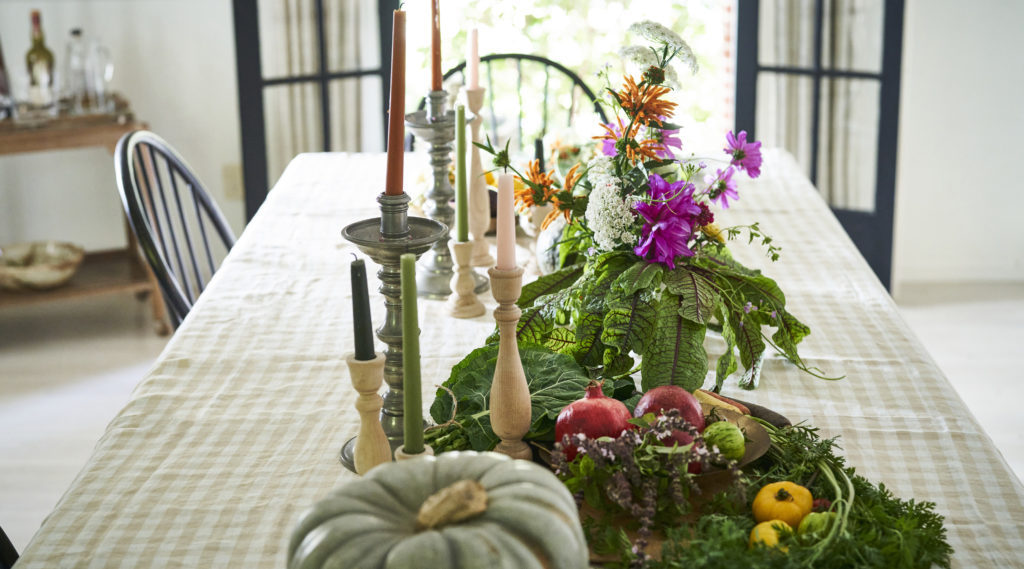
Thomas J. Story
A heavy, sage-green pumpkin can anchor a fall table in the same way a pricey professional arrangement can. Place it on a cutting board or platter, and use it as a base to build around—adding deep purple eggplant, small zucchinis with the blossoms still attached, or the lacy tops of carrots.
3. Add beeswax candles and neutral linens in complementary colors.
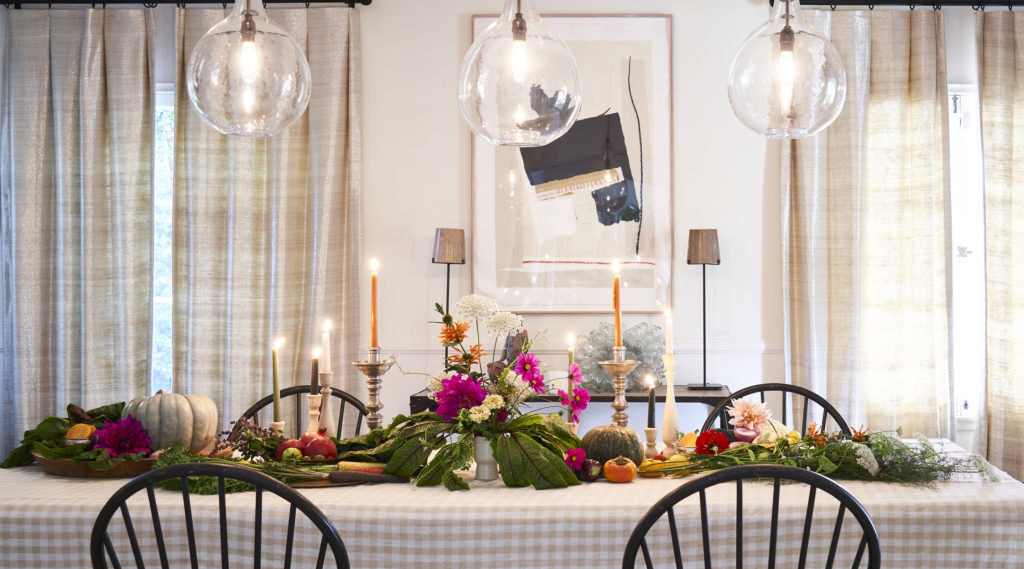
Thomas J. Story
Hand-poured Greentree Home candles in shades like blush pink and olive green bring out the colors in your produce and play on the neutral/natural theme. Unfinished wood and aged brass candlesticks work well with the rustic theme. A tablecloth from Morrow Soft Goods is the perfect neutral backdrop for a palette of fall garden color.
4. Use what you have around the house.
Dig through your cabinets to find low, shallow baskets, metal and ceramic trays, or platters to display the harvest. A footed glass vase from last year’s Mother’s Day flower delivery can become the ideal spot for a few bunches of rainbow carrots.
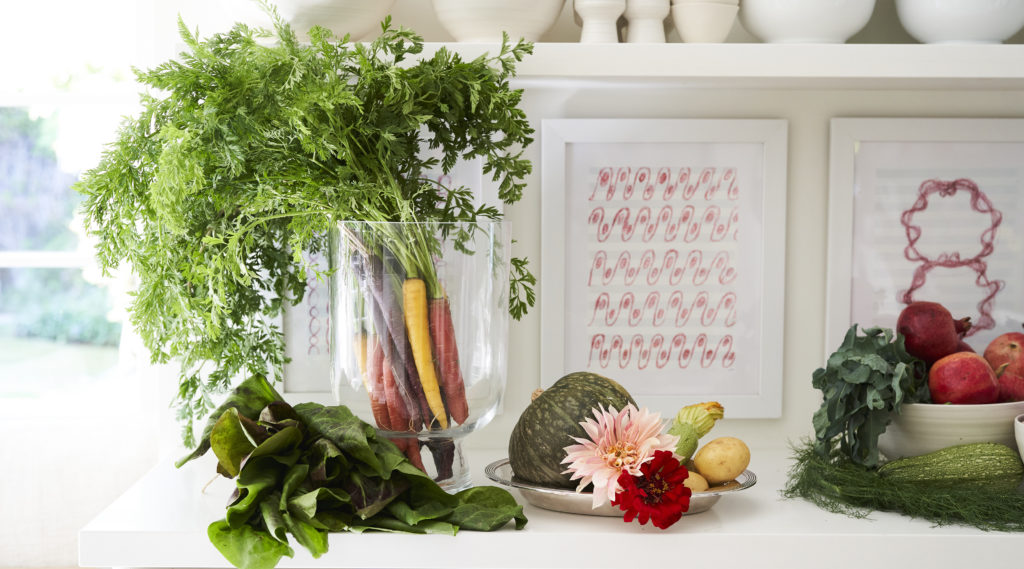
Thomas J. Story
5. Cut open vegetables and fruits to show the beauty inside.
Show off those watermelon radishes, purple carrots, pomegranates, and persimmons by revealing they’re beautiful on the inside, too. Slice open your produce to add texture and more interesting color to your tablescape. Just make sure the linens you use are stain-proof.
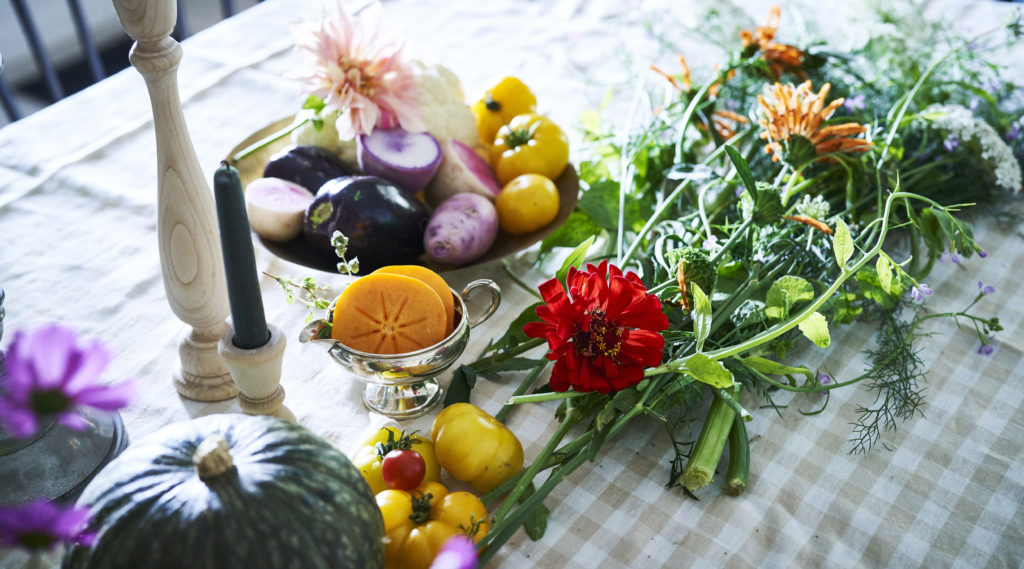
Thomas J. Story
